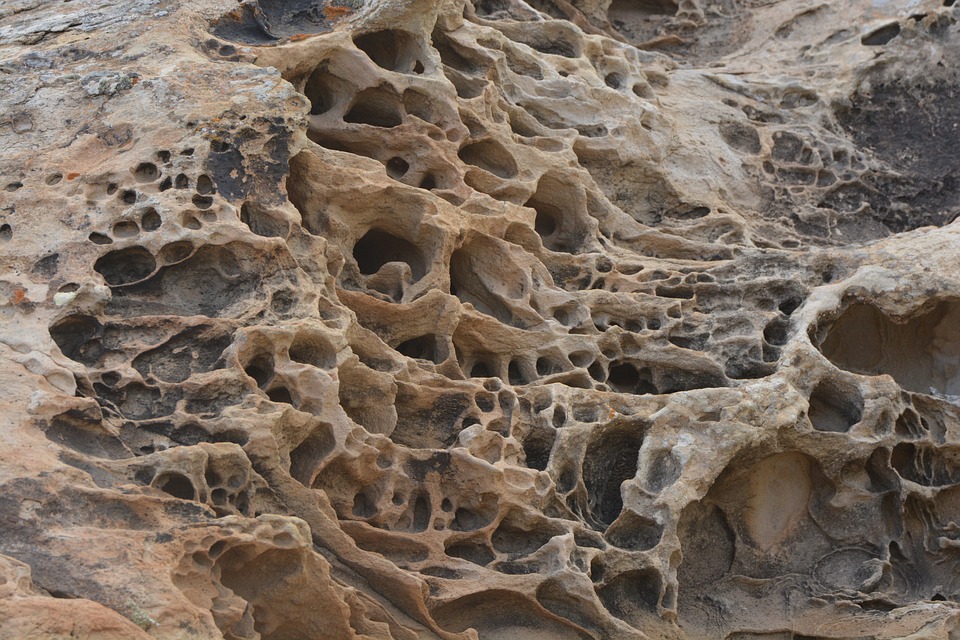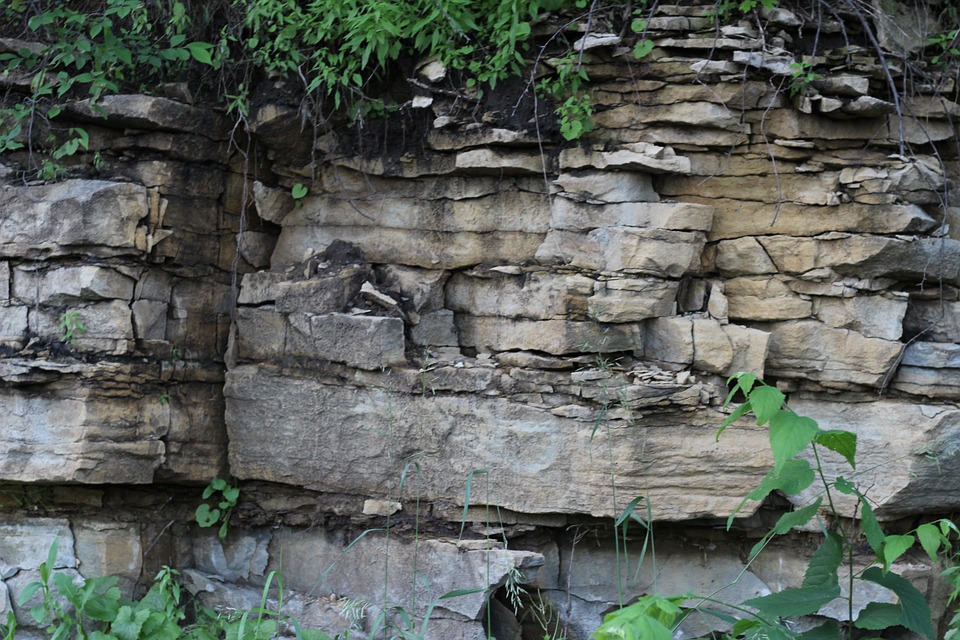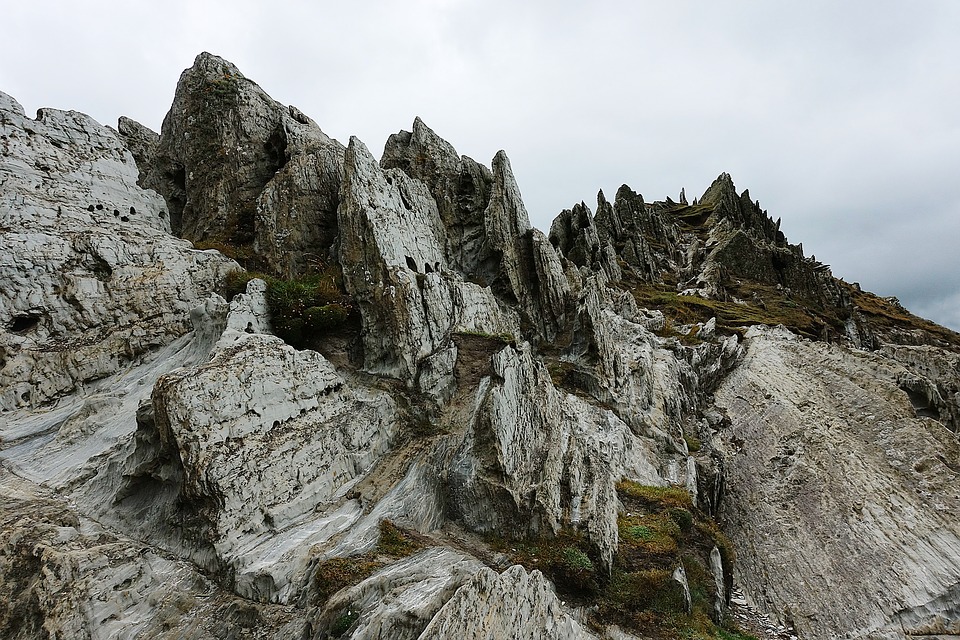Introduction and Classification of Rocks
geology·@munawar1235·
0.000 HBDIntroduction and Classification of Rocks
Dear steemian, today we shall learn basic things about geology. Professionally I am geological engineer and I love to talk about geology and ground engineering. Today, we shall discuss about *classifications of the rocks.* The first broadest classification of soil divides geological materials into rocky terrains and loose soils. The rocky terrains have high mechanical consistency and are usually masses of lithoid material. These are fissured and are usually degraded to variable extents. Loose soils are made of particles which are result of weathering and other environmental factors like water, frost, wind and debris transportation. As a result of these factors, solid rock is fragmented into particles. The forming cycle of rocks and soils is shown in below diagram: <center></center> **<center>CLASSIFICATION OF ROCKS</center>** There are three main classifications of rocks which are developed in different geological conditions. We shall discuss them one by one. ### Magmatic Rocks: <center></center> These rocks which are also called igneous rocks are those formed by the cooling of magma (a molten mass containing volatile elements). These elements give it its fluidity and accelerate the chemical reactions. These are divided into intrusive, extrusive and hypabyssal rocks depending upon magma cooling rate and its location. <div class="pull-right"><center><img src="https://i.imgur.com/FcapS1G.jpg" /><br/><em><a href="http://www.mineralogy4kids.org/rock-cycle/intrusive-igneous-rocks">Image source</a></em></center></div> Intrusive rocks cool down inside the Earth's crust or in the highest part of the Earth’s mantle and their cooling is very slow (usually about 150 thousand years) thus facilitating the growth and development of crystals inside them; some typical examples of this type of rock are granites and quartz-diorites. <div class="pull-left"><center><img src="https://i.imgur.com/GULQ3FE.jpg" /><br/><em><a href="http://www.mineralogy4kids.org/rock-cycle/extrusive-igneous-rocks">Image source</a></em></center></div> Extrusive rocks instead form after an eruption or lava flow and therefore cool in a very short time (about one year) and as a result a part of the rock is "frozen" in an amorphous state. They have a microcrystalline matrix and a vitreous structure. Some examples of these rocks are basalt, porphyry and pumice. Hypabyssal rocks are formed when magma cools in very small cavities under the Earth's surface with a quiet quick cooling. ### Sedimentary Rocks: <center></center> The sedimentary rocks are formed by an accumulation of sediments of various origins deriving mostly from degradation and erosion of previously existing rocks that deposited on the Earth's surface. The sedimentary rocks are therefore the result of a complex set of phenomena, called sedimentation that incudes erosion by exogenous agents, transportation by fluids (water, wind, ice), sedimentation in a marine, continental or mixed environment and lastly diagenesis. Physical processes that cause alteration of rocks are chiefly those that cause cracks and fractures in the rocky mass caused, for example, by rock erosion. These phenomena are often accompanied by the effects of water that passes through the cracks, freezes due to low temperatures and therefore enlarges the fractures basically breaking the rock into pieces. The rock breaking process can also be facilitated by very hot climates: the alternation of intense heat and cold during the day cause massive expansion and contraction of the rock surface that in turn lead to rock foliation. According to the type of sediment and therefore the characteristics of the sedimentary process, sedimentary rocks are divided into the following categories: clastic, chemical or biochemical sedimentary rocks. <div class="pull-left"><center><img src="https://i.imgur.com/HCrCnkL.jpg" /><br/><em><a href="http://www.mineralogy4kids.org/rock-cycle/clastic-sedimentary-rocks">Image source</a></em></center></div> The clastic rocks are formed by other rocks which are transported from their formation site, undergo further transformations and are then deposited. Examples are conglomerate, sandstones, siltstones and clay stones all with small diameter. <div class="pull-right"><center><img src="https://i.imgur.com/k9jV3aS.jpg" /><br/><em><a href="http://www.mineralogy4kids.org/rock-cycle/nonclastic-sedimentary-rocks">Image source</a></em></center></div> Chemical sedimentary rocks are formed by salts or chemicals which are usually present in seawater and deposit at the bottom. The best known chemical sedimentary rocks are evaporites, chalk and rock salt and some types of dolostone and limestone. <div class="pull-right"><center><img src="https://i.imgur.com/lKMyTaf.jpg" /><br/><em><a href="https://web.csulb.edu/depts/geology/facultypages/bperry/Sedimentary%20Rocks%20Tour/biochemical_sedimentary_rocks.htm">Image source</a></em></center></div> Biochemical sedimentary rocks develop from deposition and cementation of exoskeletons of organisms with carbonate shells. Pelagic limestone, radiolarites and diatomites are common examples of biochemical sedimentary rocks. ### Metamorphic Rocks: <center></center> Metamorphic rocks are rocks that underwent modifications caused by high temperatures and pressure. This modification process is called metamorphism. This type of rock may originate from the transformation of sedimentary rocks (for example marble, which originates from the effect of high pressure on limestone). The metamorphic rocks may also originate from magmatic rocks or other metamorphic rocks. Metamorphic rocks can be produced by three types of metamorphism: contact, regional and dynamic metamorphism. <div class="pull-right"><center><img src="https://i.imgur.com/b0kEdhM.gif" /><br/><em><a href="http://mokkka.hu/drupal/en/node/1972">Image source</a></em></center></div> Contact metamorphism occurs due to the increase in temperature when igneous or sedimentary rocks come into contact with magmatic rocks which are still hot. The rocks igneous or sedimentary surrounding the hot magmatic rock (the aureole) are metamorphosed into new types of minerals with characteristic structures; the metamorphic process inside the rock gradually weakens as the distance from the hot magma increases. <div class="pull-left"><center><img src="https://i.imgur.com/nLLI9gJ.jpg" /><br/><em><a href="http://slideplayer.com/slide/6027468/">Image source</a></em></center></div> Regional metamorphism occurs over broad areas (dozens or hundreds of kilometres) that underwent deformation during orogenic events that caused a widespread increase of temperature and pressure which produces very peculiar rocks. <div class="pull-right"><center><img src="https://i.imgur.com/yNh1SRM.jpg" /><br/><em><a href="http://armelection.info/fresh-post/dynamic-metamorphism.htm">Image source</a></em></center></div> Dynamic metamorphism is caused by pressure increase in areas close to tectonic areas. This metamorphism covers very small areas and creates new structures and textures. Some metamorphic rocks are used as construction materials. The most widespread are marble, slate and gneiss. <center></center> Images have been taken from Pixabay unless otherwise source given. References: 1- [Wikipedia](https://en.wikipedia.org/wiki/Rock_(geology)) 2- Textbook of Petrology of Rocks
👍 munawar1235, bosnia, judicar, yazanstorm, razpor, shaka, smasher, arunava, tellmestory, jumon99, crazy3, syedumair, andrewclk, nainaztengra, slausonboy, dbukyo, stranniksenya, giosou, stepnoysuslik, cryptocontender, daan, avtoledy, purohumor, rizalmukhtar24, kharrazi, rny, yosra, carpe-diem14, ceramixer, prettyrose, reko, gizemli3, zizuflorin, irinatsvetkovva, pkalra, fitriani02, lexorka, jeffjagoe, callmefib3r, superstar2018, aligotze37, rabo, d-pend, apartphilosopher, team101, hasan086, codenamejoker, fatkat, learnguitar, lizactivate, letsmakes, steem-samiam, c0ff33a, blue.panda, estronitex, coolshades, samve, geopolis, pratique2point0, the-geekiest-one, skycae, wisewoof, effofex, ravenruis, gabrielarbie10, kaanhan, noobsin, cheapogroovo, rehan12, jznsamuel, nataschachem,